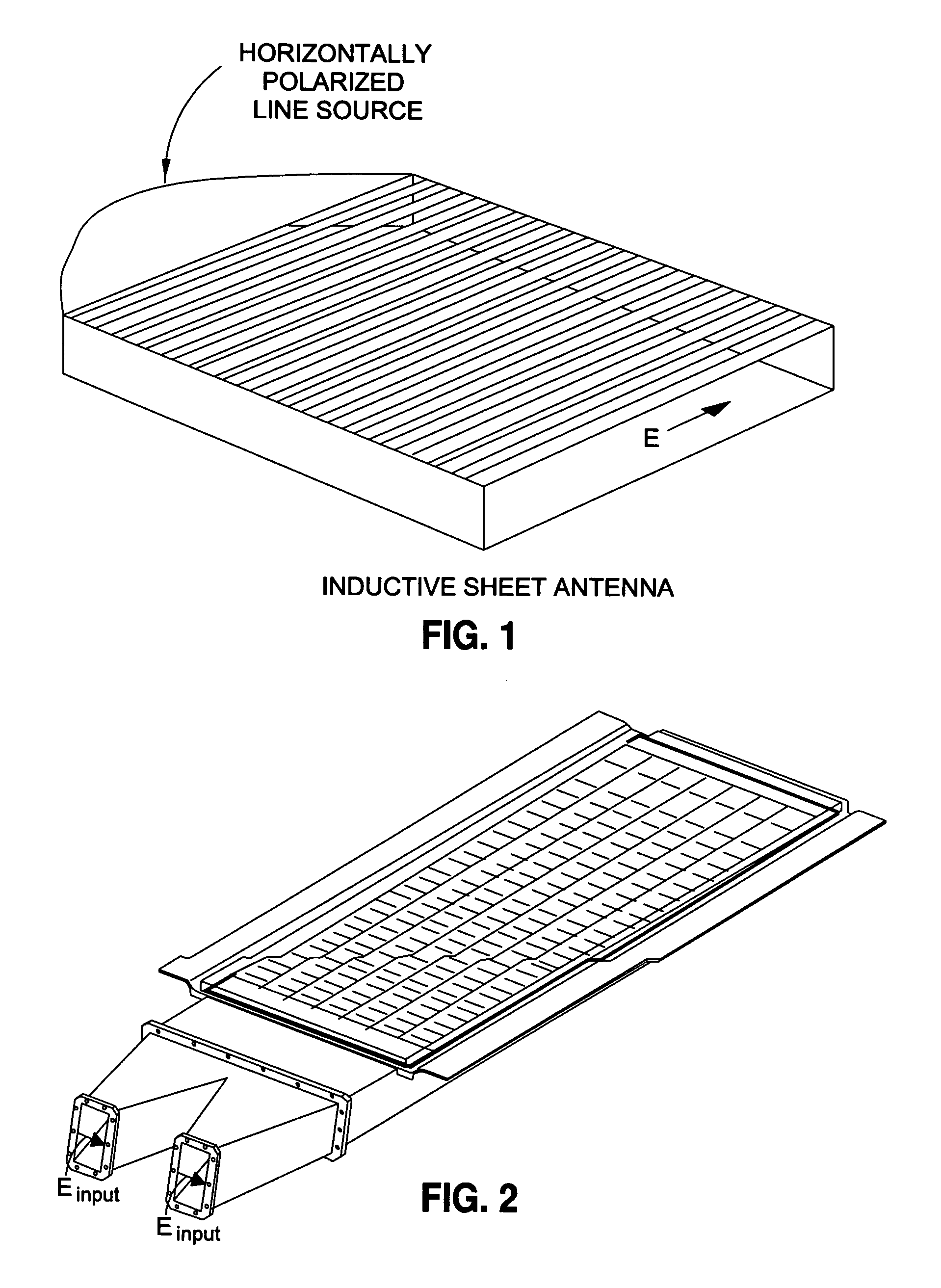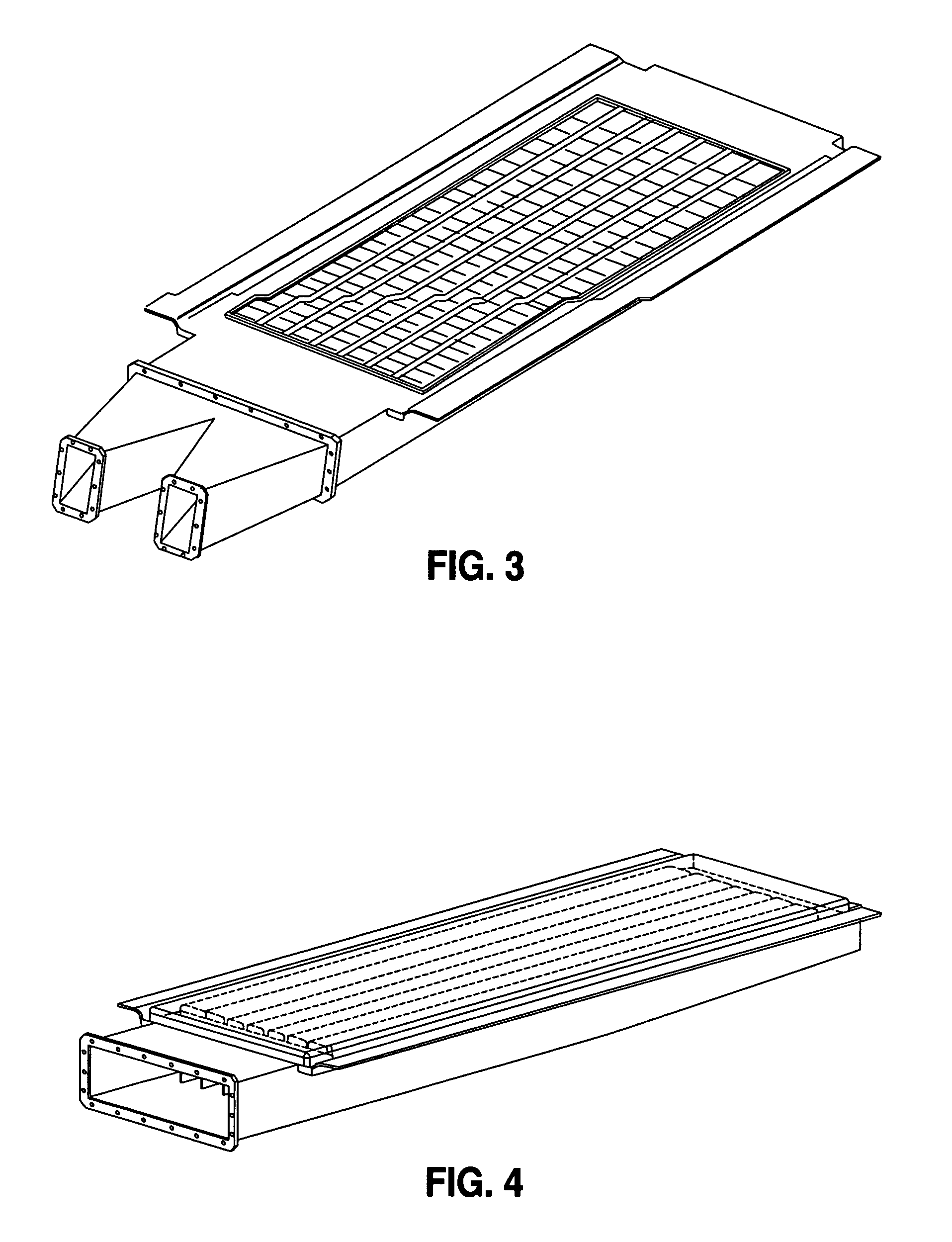Flat-aperture waveguide sidewall-emitting antenna
a waveguide and sidewall technology, applied in the field of antennas, can solve the problems of serious phase-front distortion (phase error), wave-reflection, and inability to use more conventional means such as pyramidal horns, and achieve the effect of shallow depth and large apertur
- Summary
- Abstract
- Description
- Claims
- Application Information
AI Technical Summary
Benefits of technology
Problems solved by technology
Method used
Image
Examples
Embodiment Construction
[0025]The detailed description set forth below is intended as a description of the presently preferred embodiment of the invention, and is not intended to represent the only form in which the present invention may be constructed or utilized. The description sets forth the functions and sequences of steps for constructing and operating the invention. It is to be understood, however, that the same or equivalent functions and sequences may be accomplished by different embodiments and that they are also intended to be encompassed within the scope of the invention.
[0026]Referring now to the drawings, FIGS. 2 and 3 provide exterior views of an exemplary flat-aperture waveguide sidewall-emitting antenna as provided. Normally, the interior of the antenna is evacuated to high-vacuum during high-power microwave operation. A dielectric window is mounted to the antenna covering the aperture and an o-ring is applied to provide a vacuum-to-air seal. FIGS. 4 and 5 show additional views of the flat...
PUM
 Login to View More
Login to View More Abstract
Description
Claims
Application Information
 Login to View More
Login to View More - R&D
- Intellectual Property
- Life Sciences
- Materials
- Tech Scout
- Unparalleled Data Quality
- Higher Quality Content
- 60% Fewer Hallucinations
Browse by: Latest US Patents, China's latest patents, Technical Efficacy Thesaurus, Application Domain, Technology Topic, Popular Technical Reports.
© 2025 PatSnap. All rights reserved.Legal|Privacy policy|Modern Slavery Act Transparency Statement|Sitemap|About US| Contact US: help@patsnap.com



